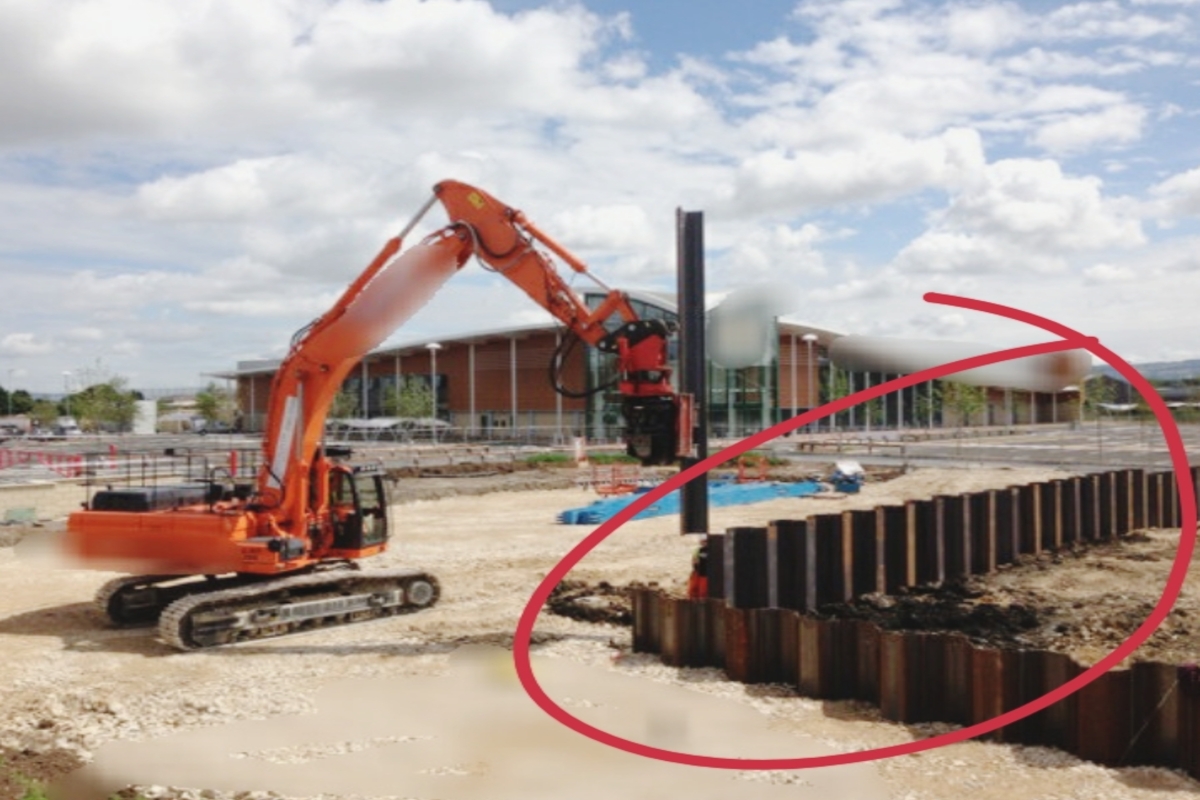Table of Contents
Introduction Of Sheet Piles
Sheet piles are a construction material that have interlocking edges and are utilized to support excavation and retain earth. Typically, these piles are composed of steel, but they can also be made from reinforced concrete or timber.

Sheet piles are widely used in various applications such as land reclamation, underground structures like car parks and basements, retaining walls, and riverbank protection in marine environments. They are also utilized in the construction of seawalls and cofferdams, among other applications.
Selecting the most suitable sheet piling for a specific project depends on various factors such as the project’s duration, site conditions, required depth of the piles, bending moments involved, the structure’s nature, and the type of protection needed.
Types Of Sheet Piles
There are three main types of sheet piles: timber, reinforced concrete, and steel. Timber sheet piles are often used in temporary structures to resist light lateral loads. However, they require preservative treatment and are not suitable for soils with stones.
Reinforced concrete sheet piles are typically used in permanent river embankments, canals, and other marine structures. They are formed using precast concrete members that are connected together with tongue and groove joints. The toes of the piles are usually cut with an oblique face to facilitate easy driving and interlocking, while the heads are finished off by casting a capping beam.
Steel sheet piles are the most common form of sheet piles used in construction. They have good resistance to high driving stresses, excellent water-tightness, and can be increased in length through welding or bolting. Steel sheet piles can be classified into four basic forms: normal sections, straight web sections, box sections, and composite sections.
Normal sections, such as Larssen and Frodingham sheet piles, are designed to provide good strength for low weight. They have good driving qualities and are interlocked to facilitate easy positioning of the piles and driving. Straight web sections are interlocked and driven to form cellular cofferdams that can be filled with materials such as gravel and small rocks. Box sections are formed by welding two or more sheet pile sections together and are suitable for scenarios where heavy loads and high bending moments are anticipated. Composite sections are commonly used in waterfront protection where large bending moments and heavy axial loads are anticipated. A typical composite pile is a double Frodingham section welded to the flange of a universal I-beam.
Sheet Piles Installation Procedure
Prior to the installation of sheet piles, it is necessary to carry out a thorough inspection to ensure that they are straight, free of cracks, and have interlocking components that are intact. During the driving process, it is essential to carefully monitor the pile and cease driving immediately if it ceases to penetrate the soil. In cases where adjacent piles are unable to penetrate to the design depth, efforts should be made to remove the obstacle by means such as partial excavation or the use of a water jet. The number of “under-driven” piles is acceptable within certain limits, which may vary depending on the specific design requirements.
During the driving process, sheet piles may deviate from a vertical plane and lean sideways due to encountering obstacles in the soil, which act as deflection. To counter this, guide controls should be used.
There are different techniques for driving sheet piles, including driving piles in panels, where two piles are driven at either end of a panel to support it during driving to the final position. The pair of piles left on the end will then support the next panel along. Trestles and walings can also be used to support and position sheet piles during driving.
Vibratory hammers are often used to install sheet piles, but if the soil is too hard or dense, an impact hammer may be used. In certain locations where vibrations are a concern, the sheet piles can be hydraulically pushed into the ground.
Advantages
- Sheet pile is a sustainable option as it is made of recyclable materials and can be reused.
- It is available in various lengths, sizes, and steel options, providing flexibility in design.
- Sheet pile can be used for both temporary and permanent structures.
- Silent and vibration-free installation methods can be used, reducing noise pollution and minimizing disturbance to the surrounding environment.
- Sheet pile can be installed more quickly than other types of walls, such as contiguous or secant walls.
- Cofferdams can be constructed in various shapes using sheet pile.
- Sheet pile joints can create a tight fit to form an effective water seal.
- Sheet pile is lightweight, making it easy to lift and handle during installation.
- The length and design of sheet pile can be easily adjusted to suit different project requirements.
- Sheet pile joints are designed to withstand high pressure during installation.
- Sheet pile requires minimal maintenance both above and below water.
Faqs
A sheet pile wall is a type of retaining wall made of steel, concrete, or wood sheets that are driven into the ground to create a barrier and support soil or water.
A sheet pile retaining wall is a type of retaining wall made of interlocking sheet piles that are driven into the ground to retain soil or water and prevent erosion.
